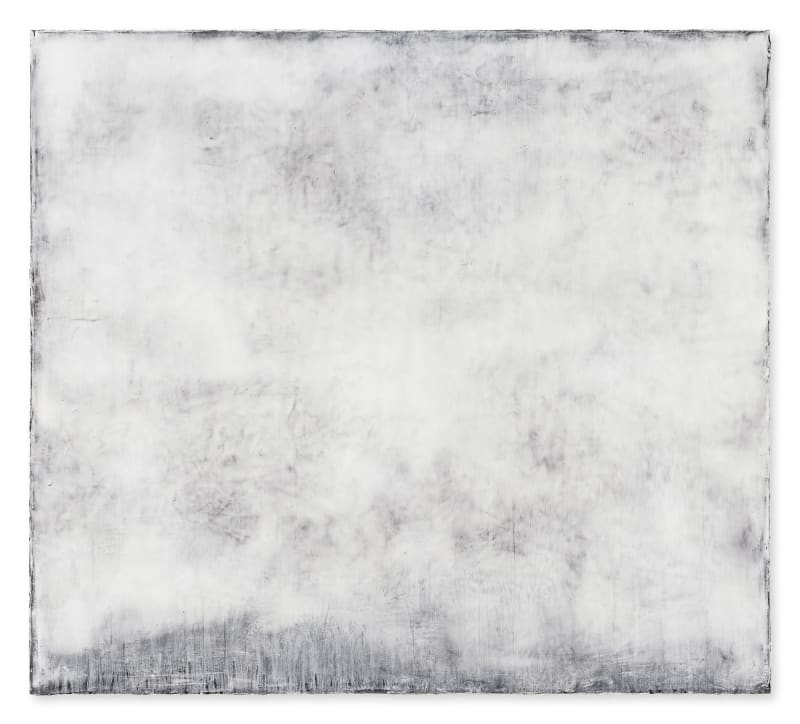Hideaki Yamanobe
Through the clouds
For many years Hideaki Yamanobe has with a few exceptions restricted himself in his painting to the non-colors of black, white, and grey. He has nevertheless repeatedly managed to create new, surprising nuances and hitherto unseen aspects using this extremely pared-back palette. Yamanobe’s oeuvre is a striking example of the paradox that Friedrich Nietzsche once referred to in the context of Ancient Greek poetry as “dancing in chains”. The artist makes up for this self-imposed compulsion to only use non-colors by delighting in experimenting with the most subtle forms of surface treatment which opens up unrestricted scope for his painting.
That said, the visual opulence of this painting is not something that reveals itself to a swift, superficial everyday glance. Yamanobe’s pieces expect their beholders to be patient and attentive, because it can take quite a while until the eye adjusts to the fine structural traits and delicate differences in brightness in the images. When viewing them, one repeatedly discovers that suddenly quite unexpected details become visible and new ways of reading them emerge. The way the images thus change radically into another shape is one of the most astonishing of experiences that Yamanobe’s paintings offer us. For example, if you look at “Slight Light” and only see a black, slightly textured pictorial field then you have not looked carefully enough. Once your eyes have adjusted to the darkness, one does indeed notice an almost imperceptible pictorial light emanating from the unfathomable depths of the image.
The way the shape of the image suddenly changes can also be seen very clearly in “Through the Clouds”, the work that lends the exhibition its title. One seemingly obvious interpretation would be to see a mountain range in the distance at the lower edge of the picture, and above it a high, cloudy sky. However, suddenly the painting can change into something that suggests a different interpretation – and virtually sends the viewer’s vantagepoint soaring upwards. Like the view through an aircraft window onto dense clouds, the dark patches now look like forests on the ground far below, while the field of vision largely remains hidden by layers of cloud. In such pieces, we can perceive Yamanobe’s desire to create pictorial spaces of immense depth without in the slightest resorting to fabricating illusionist perspectives. In this way, he is firmly in the lineage of Japanese landscape painting, which has always been very flat and has eschewed perspective, and yet on the other hand also follows on from western abstract painting – one need think only of Mark Rothko who developed the spatial impact of his pieces simply by superimposing countless layers of color pigment. Unlike purely abstract pieces, Yamanobe repeatedly includes allusions of a figurative kind, very delicate intimations of the landscape, such as in “Whispers” – if you look at it for long you may sense that two pine trees are emerging from a white blanket of fog, or you may not. These apparitions remain as subtle and fleeting as a whisper, straddling the line dividing perception from self-deception.
Peter Lodermeyer

